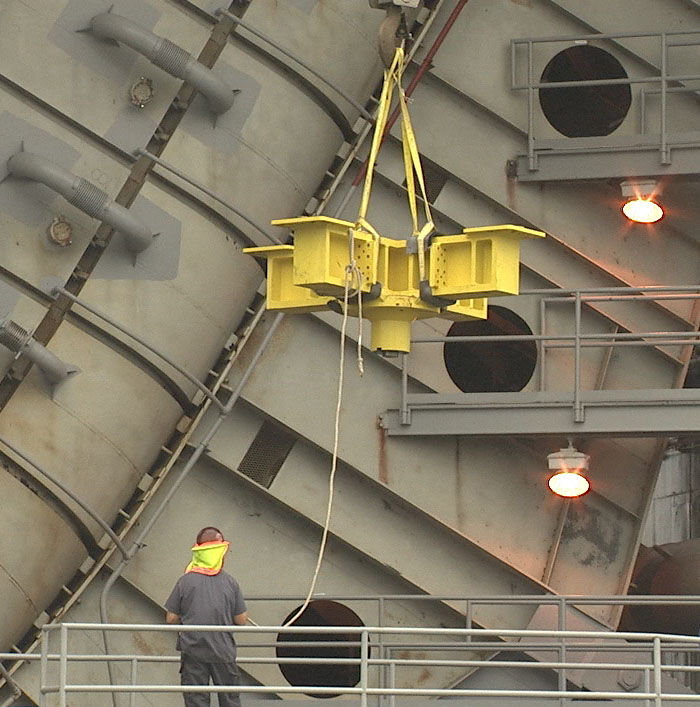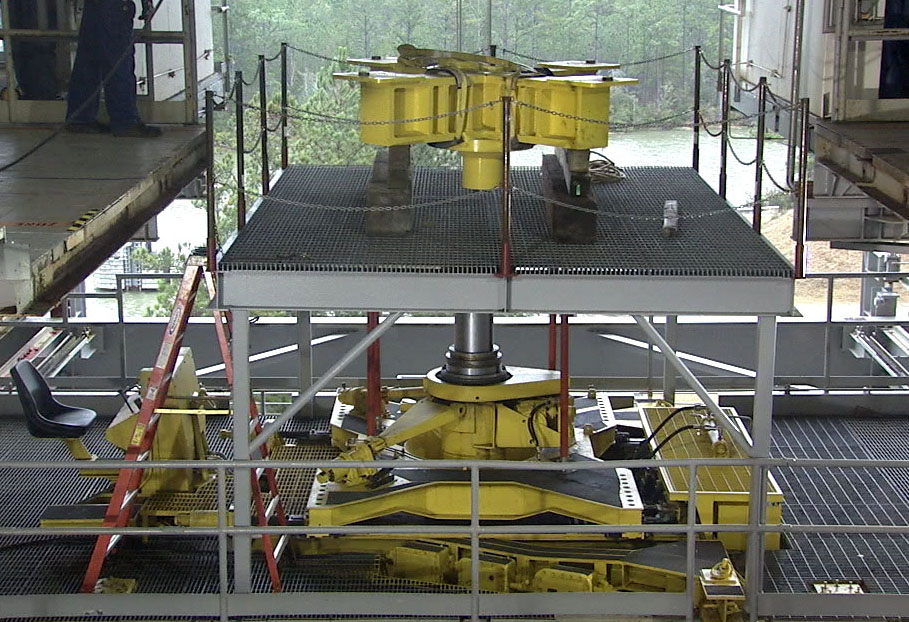Activity is growing in the A Test Complex at NASA’s Stennis Space Center in MIssissippi as the agency prepares to take a giant step forward in its return to deep space.
Early in 2014, attention is on the A-1 Test Stand, which is being prepared to test RS-25 rocket engines that will power the core stage of NASA’s new Space Launch System (SLS). The rocket will carry humans to an asteroid and eventually Mars.
“This is a big year for Stennis, for NASA and for the nation’s human space program,” said Gary Benton, RS-25 rocket engine test project manager. “By mid-summer, we will be testing the engines that will carry humans deeper into space than ever before.
Renovation of the A-1 stand represents critical groundwork for such future missions. The A-1 test team completed gimbal, or pivot, testing of the J-2X rocket engine in early September, signaling the start of full-scale renovation efforts for RS-25 testing. Equipment installed on the A-1 stand for J-2X testing could not be used to test RS-25 engines because it did not match the new engine specifications and thrust requirements. For instance in flight, the J-2X engine is capable of producing 294,000 pounds of thrust. The RS-25 engine in flight will produce nearly twice as much — about 530,000 pounds of thrust.
The first RS-25 engine is set to be delivered to the stand in May, and work is progressing, thanks to focused efforts of NASA officials and contractor teams.
A major task was completed on schedule in December with installation of a new thrust frame adapter on the stand. Each rocket engine type requires a thrust frame adapter unique to its specifications. Physically, the adapter is the largest facility item on the RS-25 testing preparation checklist.
Now, sights are set on upcoming work milestones, including:
- Completing piping work needed to deliver rocket propellants for tests.
- Installing necessary instrumentation.
- Completing a readiness review in March, followed by early tests of new piping systems.
- Installing equipment needed to accurately measure rocket engine thrust during tests.
- Installing an initial RS-25 engine.
- Completing preliminary tests of installed engine and a new rocket engine test controller.
Engineers are scheduled to conduct the first hotfire test on an RS-25 engine in July. Testing of RS-25 engines will continue for years to come then in order to power the nation’s ongoing human space program.
Anticipation is high, said Jeff Henderson, A-1 Test Stand director. “We’ve shown what we can accomplish here, and now, we have to continue in that same manner of excellence,” he explained. “We just have to stay focused on what it’s all about.”
The SLS Program is managed at NASA’s Marshall Space Flight Center in Huntsville, Ala. For information about NASA’s SLS Program, visit:
For information about Stennis Space Center, visit:
https://www.nasa.gov/centers/stennis/
Media Contacts:
Rebecca Strecker
Stennis Space Center, Miss.
228-688-3249
rebecca.a.strecker@nasa.gov
Kim Henry
Marshall Space Flight Center, Huntsville, Ala.
256-544-0034
kimberly.m.henry@nasa.gov



























